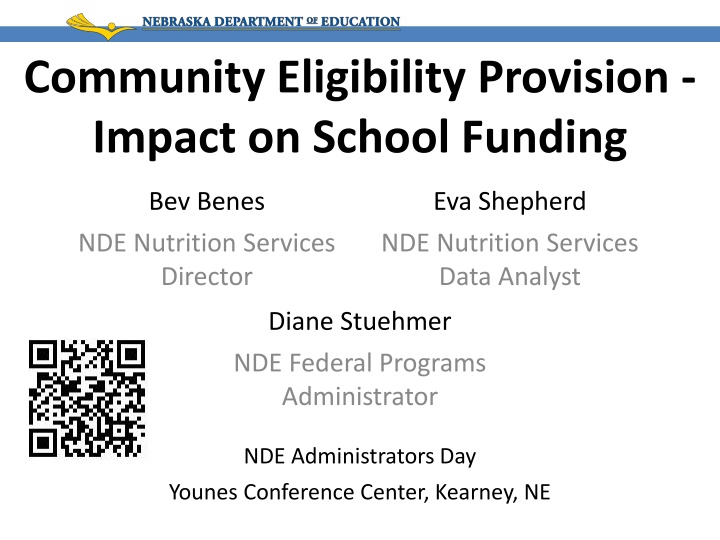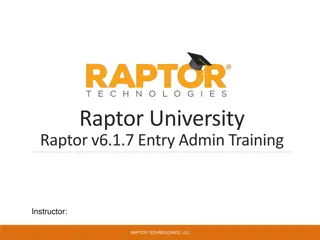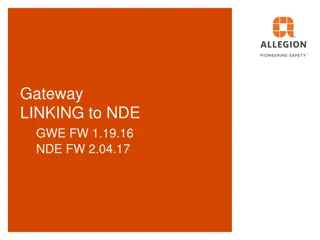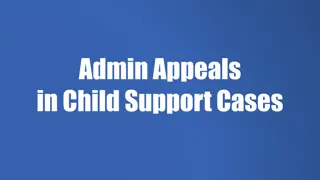
Impact of Community Eligibility Provision on School Funding and Benefits
Discover the Community Eligibility Provision (CEP) and its benefits in providing access to nutritious school meals, reducing stigma, and streamlining administrative processes. Learn how CEP works for high-poverty schools and the criteria for participation.
Download Presentation

Please find below an Image/Link to download the presentation.
The content on the website is provided AS IS for your information and personal use only. It may not be sold, licensed, or shared on other websites without obtaining consent from the author. If you encounter any issues during the download, it is possible that the publisher has removed the file from their server.
You are allowed to download the files provided on this website for personal or commercial use, subject to the condition that they are used lawfully. All files are the property of their respective owners.
The content on the website is provided AS IS for your information and personal use only. It may not be sold, licensed, or shared on other websites without obtaining consent from the author.
E N D
Presentation Transcript
Community Eligibility Provision - Impact on School Funding Bev Benes Eva Shepherd NDE Nutrition Services Data Analyst NDE Nutrition Services Director Diane Stuehmer NDE Federal Programs Administrator NDE Administrators Day Younes Conference Center, Kearney, NE
What is CEP? The Healthy, Hunger-Free Kids Act of 2010 provides an alternative that eliminates the need for household applications for free and reduced- price meals in high-poverty Districts and schools. It is referred to as the Community Eligibility Provision (CEP) Available nationwide beginning July 1, 2014. 7/30/2014 2
CEP Benefits Increases access to nutritious school meals Reduces the stigma associated with free and reduced price meals Reduces chance of overt identification Facilitates implementation of creative meal service models Breakfast in the classroom and grab and go kiosks Reduces paperwork and administrative costs Reduces household and administrative burden 7/30/2014 3
Standard Procedure vs. CEP School meal programs determine eligibility through: Household income applications Participation in assistance program (categorical eligibility) Through case number on application (e.g. Supplemental Nutrition Assistance Program (SNAP)) Directly certified through matching participant lists with enrollment lists 7/30/2014 4
How CEP Works High-poverty schools provide free breakfasts and lunches to all students without collecting applications Eligibility is determined for an entire district, a group of schools within a district a single school within a district A district may have some schools that participate in CEP and others that do not. 7/30/2014 5
How CEP Works, contd Districts and/or schools must Meet a minimum level of Identified Students for free meals in the year prior to implementing Community Eligibility Agree to serve free breakfasts and lunches to all students Agree to cover with non-Federal funds any costs of providing free meals to students above the amounts provided by Federal assistance. 7/30/2014 6
Who are Identified Students? Children certified for free meals without submitting a school meal application Supplemental Nutrition Assistance Program (SNAP) Temporary Assistance for Needy Families Cash Assistance (TANF) Food Distribution Program on Indian Reservations (FDPIR) Medicaid(in districts participating in USDA s demonstration project) and . 7/30/2014 7
Who are Identified Students? Children certified for free meals without submitting a school meal application Includes children who are certified for free meals without application because they are in foster care in Head Start homeless migrant runaway 7/30/2014 8
Identified Student Percentage # of Identified Students Identified Student % = X 100 Total # of enrolled Students with access to NSLP/SBP The Identified Student Percentage may be determined by: An individual participating school A group of participating schools in the LEA Entire LEA if all schools participate 7/30/2014 9
How CEP Works Free claiming percentage = Identified Students x 1.6 (capped at 100%) Example: a school with 50% Identified Students would be reimbursed at the free rate for 80% of the breakfasts and lunches it served (50% x 1.6 = 80%) and the remaining 20% would be reimbursed at the paid rate If the percentage of identified students in a school is 62.5% or more, the reimbursement rate would be 100% - - - 62.5% x 1.6 = 100% 7/30/2014 10
What is the Function of the 1.6 Multiplier? Provides an estimate of the percentage of students eligible for free and reduced-price meals in participating CEP schools, groups of schools or districts that is comparable to the poverty percentage that would be obtained in a non-CEP school Participating schools are guaranteed to receive the same free claiming percentage for 4 years 7/30/2014 11
Calculations Must be at least 40% for an individual school, the group of schools, or entire LEA if all schools participate. Grouping schools: Divide the total number of identified students for all grouped schools by the total enrollment for all grouped schools to determine eligibility. Note: not all schools in the group or in the LEA if electing for the entire LEA have to meet the 40% threshold. nearly 30% 7/30/2014 12
http://www.education.ne.gov/NS/NSLP/CEP/CEP.html 7/30/2014 13
Notification Timeline Summary LEAs/schools must notify the State no later than June 30thof the school year prior to the first year of electing CEP except for SY2014-15 SY2014-15 the deadline has been extended to August 31, 2014. Identified Student % for SY 2014-15 is determined as of April 1, 2014 7/30/2014 14
Notification Timeline Summary A new identified student percentage may be established each year of the four year cycle for use in the following year. Calculate the Identified Student Percentage as of April 1 LEAs/schools may elect to stop CEP for the next year by notifying the State no later than June 30th of the current school year 7/30/2014 15
Things to Think About. . . Potential issues surrounding the absence of application data Is school meal application data used to distribute other sources of funding? (Title I, Erate, State, Local, etc.) Anticipated level of federal reimbursement Non-federal resources available 7/30/2014 16
COMMUNNITY ELIGIBILITY PROVISION & TITLE I
WHAT ARE THE AREAS OF INTERSECTION BETWEEN CEP AND TITLE I? Several aspects of Title I require the use of poverty data at the school or individual student level Within-state allocations Within-district allocations Equitable services for eligible nonpublic students Accountability 7/30/2014 18
WHAT ARE THE AREAS OF INTERSECTION BETWEEN CEP AND TITLE I? NDE continues to run reports and calculations to determine what effects, if any, using CEP instead of school lunch free and reduced price family meal application forms will have on allocation for grant programs, E-rate, etc. 7/30/2014 19
WITHIN STATE ALLOCATIONS Nebraska uses an alternate formula Districts with census count 20,000, allocations are calculated by USDE For Districts with <20,000 census count Census data and Free lunch data 7/30/2014 20
WITHIN DISTRICT ALLOCATIONS What if some schools are CEP and others are not? What effect does that have on building allocations? 7/30/2014 21
MAY A DISTRICT USE CEP DATA TO ALLOCATE TITLE I FUNDS TO ITS SCHOOLS? ESEA requires a District to select a poverty measure from the following options: Most recent census data of poverty for children ages 5-17 Children eligible for free and reduced-price lunches under Richard B. Russell National School Lunch Act Children in families receiving TANF Children eligible to receive Medicaid A composite of any of the above 7/30/2014 22
If a District selects NSLP data as its poverty measure (this what Nebraska uses) and has a Community Eligibility school, the Community Eligibility data will be part of the NSLP data that the District uses for within-district allocations. 7/30/2014 23
WHAT IF WE HAVE BOTH CEP AND NON-CEP SCHOOLS? The number of students directly certified is a subset of the total number of students eligible for free and reduced-price meals (thus the multiplier of 1.6) If a District has non-CEP schools with a poverty count based on the number of students approved for free and reduced-price meals and CEP schools with a poverty count based on Direct Certification data, the LEA must use a common poverty metric in order to rank order its schools and allocate Title I funds on an equitable basis. 7/30/2014 24
Example A: Within-District Allocations (CEP and non-CEP) Column 1 Column 2 Column 3 Column 4 Column 5 Column 6 Column 7 Column 8 Column 9 Column 10 Per-Pupil Amount Used by LEA Community Eligibility Schools: NSLP Count Used to Allocate Community Eligibility School Disadvantaged Students for 100% Percentage of Economically Non-Community Eligibility Reduced-Price Meals Data Identified Students Data1 400 297 Disadvantaged Students Identified by Free and Schools: Economically Title I Allocations4 Title I Allocation5 1.6 Multiplier2 1.6 Title I Funds3 425 Enrollment (Y/N) School Lincoln Washington Y 425 N/A $500 $212,500 Y Y N N N 500 600 450 400 500 2,875 N/A N/A 400 200 100 N/A 1.6 1.6 N/A N/A N/A N/A 475 560 400 200 100 2,160 95% 93% 89% 50% 20% 75% 500 500 450 450 N/A N/A 237,500 280,000 180,000 90,000 Adams Jefferson Madison Monroe Total 350 N/A N/A N/A N/A 0 N/A $1,000,000 1 The number of students may be determined once every four years for Community Eligibility schools. Moreover, the poverty data used will likely differ from other schools. For the Community Eligibility schools, the poverty data will be, for example, direct certification (Identified Students) data (e.g., SNAP or TANF) collected at least every four years times the multiplier. For other schools, the poverty data will be from household applications and direct certification data. 2 The 1.6 multiplier applies only to a Community Eligibility school. 3 For a Community Eligibility school, the Column 7 figure is equal to the lesser of (a) Column 4 x Column 6 or (b) Column 3. In other words, this number may not exceed the school s total enrollment. For the non-Community Eligibility schools, the Column 7 figure is equal to Column 5. 4 Column 7 / Column 3. 5 Column 9 x Column 7 (Note: Monroe is ineligible for Title I funds because its poverty percentage is below both the LEA s average and 35 percent.) 7/30/2014 25
Example B: Within-District Allocations (CEP and non-CEP) Using Direct Certification Data Only Column 1 Column 2 Column 3 Column 4 Column 5 Column 6 Column 7 Certification Data Through Per-Pupil Amount Used by $500 500 500 450 450 N/A N/A Disadvantaged Students Community Eligibility for Title I Allocations2 All Schools: Direct Title I Allocation3 Percentage of Economically School (Y/N) Enrollment SNAP1 500 400 560 400 200 100 2,160 LEA School McKinley Roosevelt Taft Wilson Harding Coolidge Total Y N Y N N N 750 640 900 675 500 750 4,215 67% 63% 62% 59% 40% 13% 51% $250,000 200,000 280,000 180,000 90,000 0 N/A $1,000,000 1 The figures in Column 4 exclude, for the purposes of Title I ranking and serving of schools, household application data for the non-Community Eligibility schools and direct certification from programs other than SNAP for all schools. (Community Eligibility schools are prohibited from collecting household applications.) 2 Column 4 / Column 3. 3 Column 4 x Column 6. (Note: Coolidge is ineligible for Title I funds because its poverty percentage is below both the LEA s average and 35 percent.) 7/30/2014 26
IF ALL SCHOOLS IN A DISTRICT ARE CEP, DOES IT NEED TO APPLY THE 1.6 MULTIPLIER? Using the multiplier would not be necessary. The District may rank its schools by the percentage of directly certified students in each school, even though the multiplier is used to determine USDA reimbursement amount. 7/30/2014 27
IF APPLYING THE 1.6 MULTIPLIER RESULTS IN MORE THAN ONE SCHOOL AT 100% POVERTY, MUST THE SAME PER PUPIL AMOUNT BE USED FOR EACH SCHOOL? If the schools have different direct certification percentages, the District may allocate a greater PPA for the 100 percent school with the higher percentage of directly certified students because the direct certification data indicate that the school has a higher concentration of poverty than the other 100% school(s). 7/30/2014 28
Example: Providing Different PPA for multiple buildings at 100% poverty when multiplier is applied. Column 1 Column 2 Column 3 Column 4 Column 5 Column 6 Column 7 Column 8 Column 9 Students for Title I School Number of Low-Income Per-Pupil Amount Used $750 $650 $625 $625 Allocation Calculation1 500 1500 4502 400 Ranking Title I Schools Community Eligibility Income Students for 100% 100% 90% 80% Number of Students Percentage of Low- Directly Certified Title I Allocation School (Y/N) Enrollment School School by LEA 1 2 3 4 Y Y N Y 500 1500 500 500 400 1050 80% 70% N/A 50% $375,000 $975,000 $281,250 $250,000 10 250 1 For a Community Eligibility school, this figure is equal to the lesser of: (a) Column 3 or (b) Column 4 multiplied by 1.6. 2 Poverty data are based on household applications and direct certification data. 7/30/2014 29
IF GROUPING SCHOOLS, DOES EACH SCHOOL IN A GROUP HAVE THE SAME POVERTY PERCENTAGE FOR TITLE I RANKING AND ALLOCATION PURPOSES? For districts having an enrollment 1000 students, the District must use the CEP data, either alone or multiplied by the 1.6 multiplier, for each individual school for Title I ranking and allocation purposes. 7/30/2014 30
WHEN WILL CEP DATA BE USED FOR DETERMINING TITLE I ALLOCATIONS? Since Title I uses data from January 1 thru July 1 of the previous school year, CEP data would not be used for determining allocations until the 2015-16 school year (Data from 2014-15) 7/30/2014 31
MAY A DISTRICT USE OLDER DATA FOR DETERMINING TITLE I BUILDING ELIGIBILITY? No. A District must allocate Title I funds based on data from the most recent school year. (e.g., for 2014-15 allocations, the data would be from the 2013-14 school year) 7/30/2014 32
EQUITABLE SERVICES FOR NONPUBLIC Is a District s collection f poverty data on nonpublic students affected by CEP data? Possibly. A District must identify the method it will use to determine the number of nonpublic school children from low-income families who reside in eligible attendance centers. Same poverty measure used by public school Comparable poverty data from a survey of nonpublic school families Comparable data from a different source Applying the low-income percentage of each participating public school attendance area to the number of nonpublic school students who reside in each area 7/30/2014 33
IF THE NOPUBLIC IS A CEP SCHOOL, DOES EVERY CHILD IN THE SCHOOL AUTOMATICALLY GENERATE TITLE I FUNDS FOR EQUITABLE SERVICES? No. Only those students who reside in a participating public school attendance center would generate funds with which a District would provide equitable services. If a District counts only directly certified students in participating public school attendance areas for Title I allocations to public schools, then only directly certified students in a CEP Nonpublic school who reside in those areas would generate funds for equitable services. 7/30/2014 34
IF A DISTRICT INCLUDES A CEP SCHOOL FOR PURPOSES OF NSLP, MUST THE LEA USE NSLP DATA FOR TITLE I PURPOSES? No, however CEP represents a means to both increase child nutrition and reduce burden at the LEA, school, and household levels. 7/30/2014 35
HOW OFTEN ARE DIRECT CERTIFICATION DATA AVAILABLE? At least annually Districts with schools not operating a special provision are required to run direct certification with SNAP at least three times per year 7/30/2014 36
HOW DOES COMMUNITY ELIGIBILITY AFFECT TITLE I ACCOUNTABILITY? For some reporting and accountability requirements, NDE and/or the District must have data on individual economically disadvantaged students. AYP progress by subgroup Needs Improvement: Public School Choice and Supplemental Educational Services 7/30/2014 37
POVERTY DATA NDE is considering the following Uniform use of only CEP eligible (direct certification, homeless, migrant, Head Start) counts Uniform use of CEP eligible counts (as above) PLUS the 1.6 multiplier. Use the CEP eligible counts (as above) for CEP approved schools and districts AND use NSSRS free and reduced lunch data for all non CEP schools and districts 7/30/2014 38
FOR NFORMATION NDE CEP website http://www.education.ne.gov/ns/NSLP/CEP/CEP.html Bev Benes 402-471-3566 bev.benes@nebraska.gov Diane Stuehmer 402-471-1740 diane.stuehmer@nebraska.gov 7/30/2014 39
7/30/2014 40





















